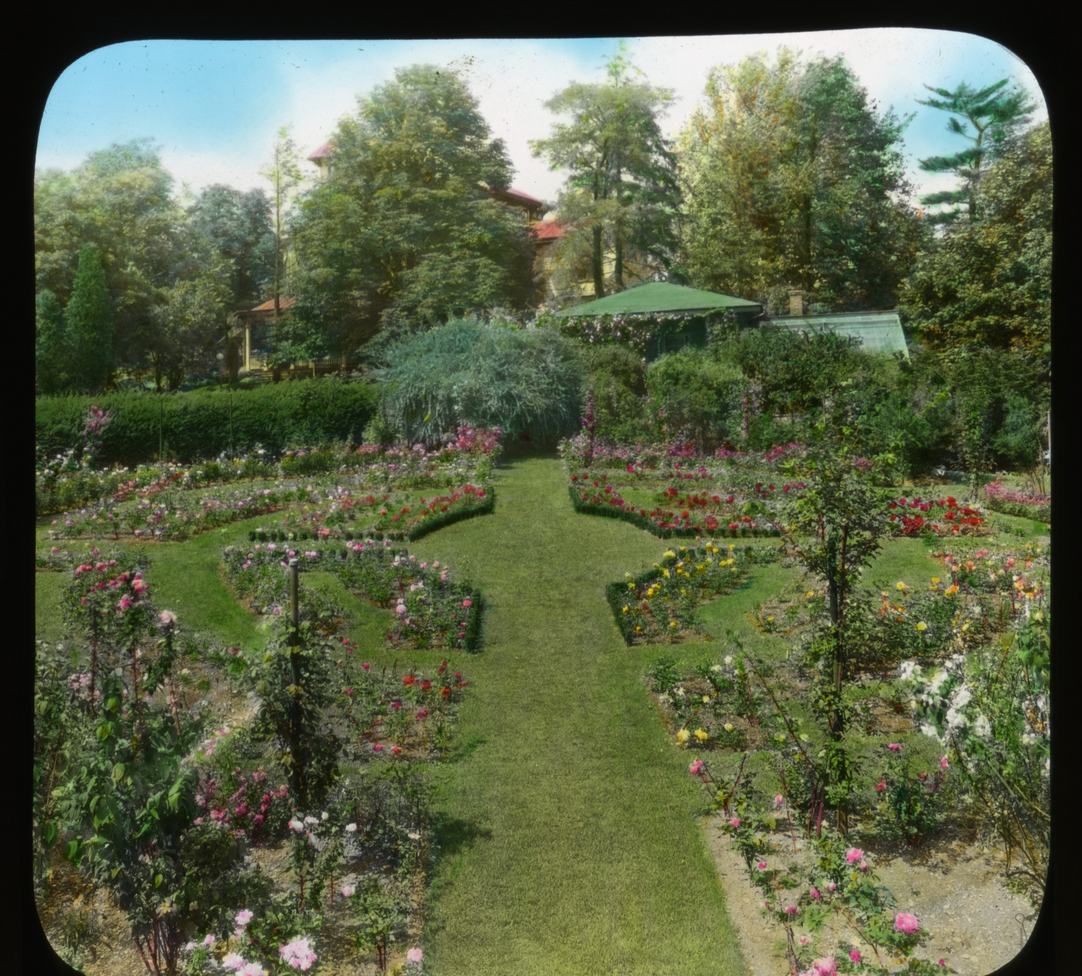In 1929, seven ladies living in in Union Bridge and New Windsor decided to form a garden club. Miss Marie Senseny was elected as the first president. They ranged in age from 31 to 62, three being single ladies.It was known as “The Garden Club” or Union Bridge Garden CLub until 1932, when by vote it was renamed “Carroll Garden Club.” The club grew rapidly until by 1935 it numbered around 26 ladies. . Ladies volunteered their homes as meeting places on the first Wednesday of the month, although on occasion, the club would meet at the Methodist Protestant Church. The hostess would provide all delicious refreshments. Dues were $.25 per year.
There was a club poem, which all were required to recite at meetings:
Trees
by Joyce Kilmer
I think that I shall never see
A poem lovely as a tree.
A tree whose hungry mouth is pressed
Against the sweet earth’s flowing breast;
A tree that looks at God all day,
And lifts her leafy arms to pray;
A tree that may in summer wear
A nest of robins in her hair;
Upon whose bosom snow has lain;
Who intimately lives with rain.
Poems are made by fools like me,
But only God can make a tree.
The club song for opening meetings was “This Is My Father’s World“.
In its early days, Carroll Garden Club asked for much member participation. Upon roll call, each name called was to respond with either a quotation or a helpful hint for the garden. Discussions at the meeting would also come from questions asked at by members at that time. At each meeting, many members were asked to read pertinent articles selected from magazines or newspapers, short stories or chapters from gardening books. Sometimes the club would subscribe to a magazine like Better Homes and Gardens to obtain slides or purchase a book to read aloud at meetings. There might be a regional or country theme in which all articles and readings pertained to that country’s customs, art, music, flowers, etc.
If someone took a garden tour in the US or abroad, there would be a report. Members would be responsible to give little talks about things like flower growth and culture. The ladies also engaged in recitations, comedy sketches and playlets to illustrate topics and gave poetry readings. By 1933 when the club made its first program booklet, at least 3 members would be responsible for each month’s official program. On occasion, there would be an official lecturer–a professor, minister or business representative.
Most meetings involved piano playing, duets, violin solos and accompaniments by several members as entertainment. There were songs that all members sang together and musical recitations. Another popular activity was guessing games to test memory of flowers, botanic names and other concepts or else word making games and spelling bees.
The first official floral show would be in 1937. Beforehand, the club would bring in “a perfect specimen” from their gardens or read articles about winter bouquets or suitable containers to go with various flowers or arrangement and display of flowers. There might be an exhibition shared with the public, but not like current shows.
The first mention of conservation came with concern over preserving laurel, ground pine and holly from becoming extinct for use as Christmas greens without garden clubs becoming involved in preservation.
The club became involved with civic beautification when they asked to plant elm trees at the Union Bridge school, give petunia seeds to children to plant and to plant the bank at the intersection of Union Bridge, Uniontown and New Windsor Roads.
The club met through the summer with a club picnic in July. Either December-Jan or January-February would be months off due to the difficulty in travel. In 1931, there must have been a terrible drought, as note was taken in September that there was no use meeting since the growing conditions were so dreadful. The club did not meet again until March 1932.
The first field trip was taken by bus to view Breeze Hill, home of J. Horace McFarland, leader in the cause of scenic beautification and founder of the American Rose Society. His 1876 Italianate home on a 2.4 acre pie shaped lot was part of Harrisburg’s City Beautiful plan. He developed test plots for cultivation of new rose varieties. After he passed away, his daughter inherited the property and sold portions of the land off for the building of three more houses. The garden no longer exists and the 7 bedroom house of Breeze Hill, requiring extensive repairs, recently sold in 2011 for $129K.



